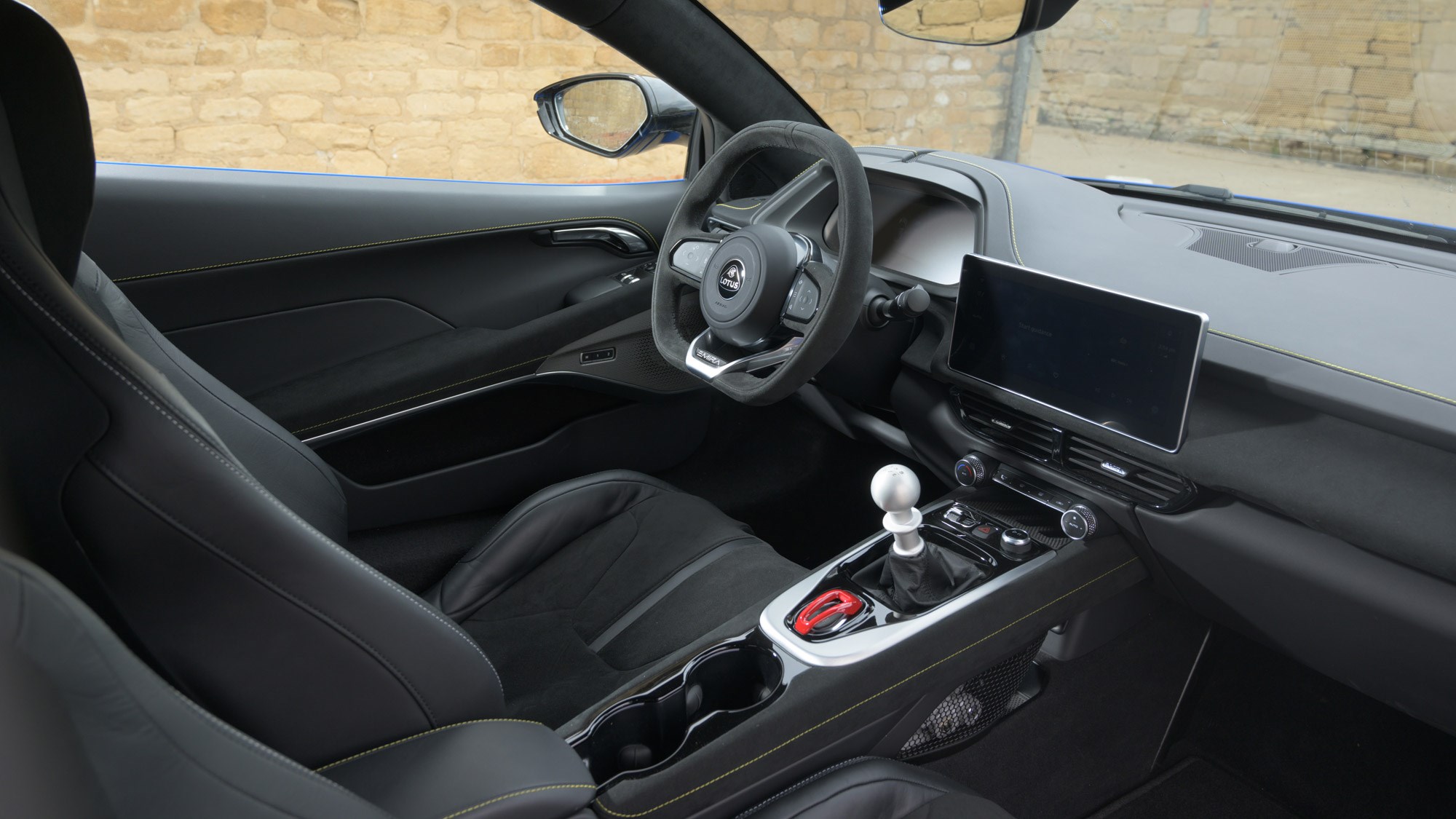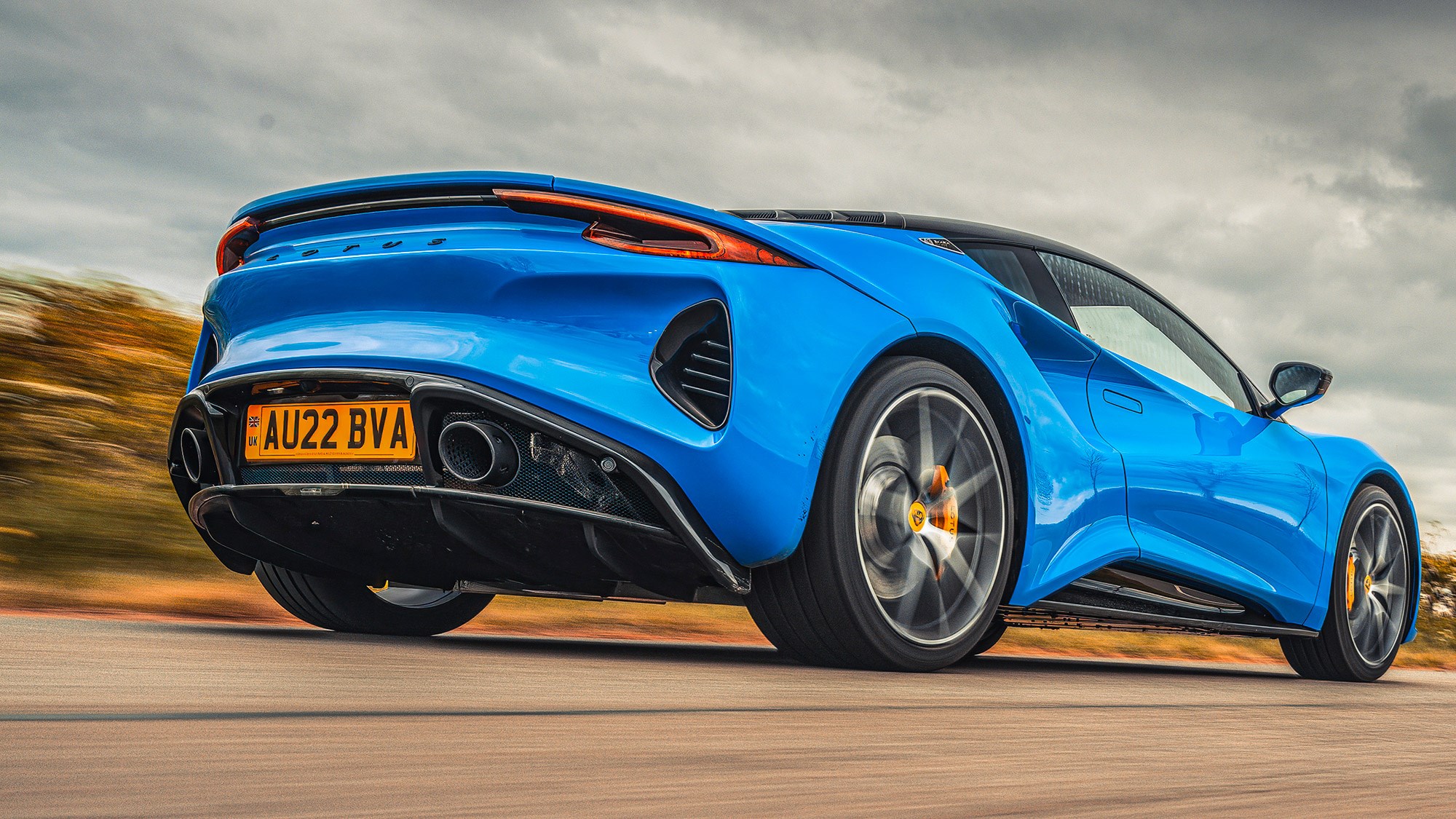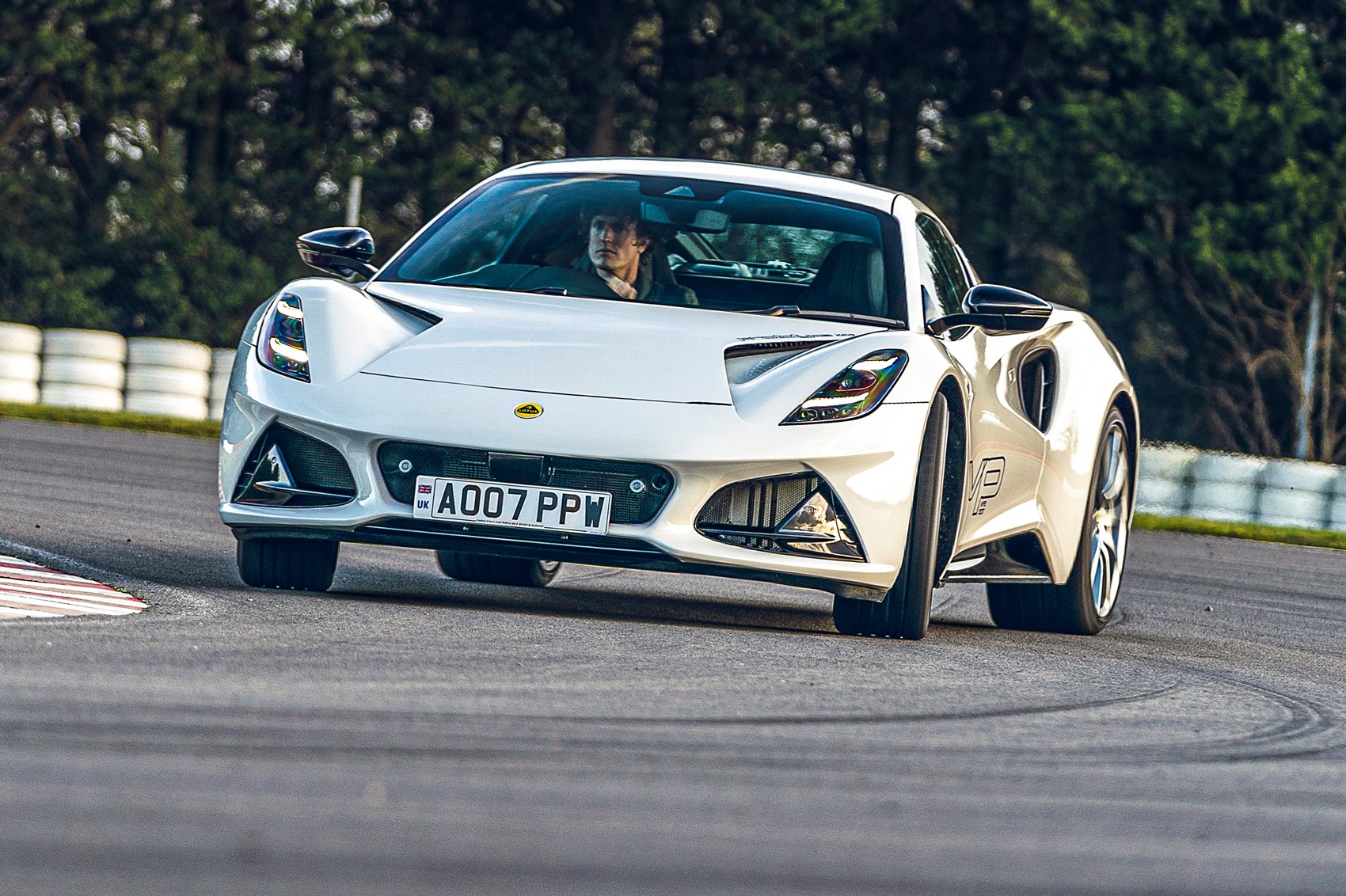► Last ever Lotus combustion car driven
► Amazing looks meet stellar driving experience
► 394bhp and fewer compromises than ever
Has Lotus saved the best till last? The Emira is the firm’s final internal combustion-powered sports car, and following our earlier drive of a prototype at the Hethel test track, we’ve now taken to the road in a pre-production validation model.
Like every First Edition, this Lotus Emira is powered by a 394bhp 3.5-litre supercharged Toyota V6, capable of propelling it from 0-62mph in ‘under 4.5 seconds’ and on to 180mph. But as ever with Lotus, there’s much more to driving one of these than outright speed.
Handling chops we expect, of course. The big questions here are those that have always plagued Norfolk’s finest: how does it compete with the major mainstream rivals – namely the Porsche 718 Cayman and Alpine A110 – when it comes to build quality and compromises in practicality?
Is this just another Lotus, or is it truly a contender? Our Lotus Emira review has the answers, and you can even see how it compares directly with those key rivals in the video above.
The new Lotus Emira looks fantastic…
It really does. While the Evora was never a bad-looking car, the Emira is at another level entirely. It’s got a proper sense of the exotic about it – all the drama of a supercar (strong 458 Italia vibes for us) at a slightly smaller scale and much lower cost. If you’re after a toy that turns heads you won’t be going far wrong with this Lotus, and the Seneca Blue of the test car is eye-poppingly gorgeous.

All those scoops and ducts are functional, incidentally, channelling air as well as projecting that baby supercar aura. It looks far more out of the ordinary than a Cayman, while an A110 is positively demure by comparison – as well as rather more petite. This isn’t just a visual thing, either, as for all of Lotus’s famous focus on lightweight engineering, the Emira V6 weighs in at a chunky 1405kg minimum.
It’s also the only one of its competitor set to go without any sort of forward storage space. The Emira has no frunk.
How does the interior compare to past Lotus models – and to rivals?
First of all, it’s easier to get in and out of the Emira than with previous Lotus sports cars. Though the substantial sill means it’s still not quite as straightforward as ducking into a Cayman or Alpine, it’s certainly less demanding than clambering into an Evora – let alone an Elise or Exige which demanded a game of roadside Twister every time you climb in or out. The trickiest thing, if you have long legs, is not putting a footprint on the junction between the dash and the sill as you lift your trailing foot in.
You sit low in the 2022 Lotus Emira, although perhaps not quite as low as you might expect. Ahead are two digital screens: one for the instrument panel, which chameleons between displays in the three driving modes (Tour, Sport and Track); and a touchscreen in the centre of the dash. Graphics on both screens are clean, minimal, modern: very Lotus.
Care has been taken to avoid putting all controls on the touchscreen, splitting functions between physical and touch controls. This happily includes delivering air-con and audio controls you can work without taking your eyes off the road or track.

Having switchgear on the steering wheel spokes has meant these have lost some of the delicacy present in earlier models, and the way these switches work means it’s easier than we’d like to accidentally activate them. But the rest of the wheel’s rim is slim, and its vaguely octagonal shape looks great.
A handily deep storage fissure is built into the centre console under the armrest, and there’s space for a smartphone ahead of the gearlever (or you can pop it into the dogbone-shaped cupholders). Since there’s no 2+2 option for the Emira, unlike the Evora, there’s a useful amount of space behind the seats to squash luggage into, as well as a reasonable rear boot. The cab-forward design together with aero, cooling and crash structure demands ahead of the driver are the reason there’s no front boot.
If the interior all sounds rather grown-up, it is. It’s less striking than the all-aluminium environs of an Elise – less of a sports-car cockpit, more of a coupe cabin – but that’s not a problem. If it’s a touch less evocative than an Elise, it’s about 500 per cent more practical and we’d much rather face a long journey in an Emira than an Evora.
Quality is generally pretty good, though with some areas still not at full production quality on this example it’s hard to make a final judgement on this versus those key rivals. Count on it being less plasticky in here than in an A110, but perhaps not quite up to that cliched bank-vault standard of the Porsche.
The most important question: how does the Lotus Emira feel to drive?
This is the six-speed manual-gearbox version of the 394bhp supercharged V6 Emira; this engine, which is supplied by Toyota, can also be ordered with an automatic transmission. In 2023, the six-banger will be joined by a 355bhp turbocharged inline-four provided by Mercedes-AMG and equipped with a seven-speed DCT auto as standard. Reduced weight and added urgency means this will be almost as quick off the mark, so don’t go dismissing the latter as the poor relation just yet.
Sticking with the task at hand, the manual ‘box is the same as that already used in Evora and Exige, and it’s still one you must be patient with. Transverse mounted and rated for 325lb ft of torque, it doesn’t like to be hurried. The clutch is heavy by modern standards and the action has a tendency to be obstinate. The satisfaction of getting a shift right – up or down – is therefore immense, and you do get used to it. But we can’t help thinking that something as simple as a more upright lever design (rather than the tiny machined ball of a knob) would do wonders for the daily usability.

Regardless, immense satisfaction is the name of the game when it comes to driving the Emira in general. Direction changes? Instantaneous; there’s roll, but like the best sports cars it’s always controlled, and the movement helps you feel what’s going on. It’s an aid to getting your bearings rather than an impediment. Steering? Still hydraulically assisted. While the Emira is available with various ADAS including lane assist, it isn’t available with self-steering lane-keeping. When a car steers this well, you want to have it all to yourself.
Steering feel is as subjective a topic as they come, but to us this car doesn’t feel quite as communicative as an Evora. Regardless, it’s still lovely, and beautifully linear. And there’s enough definition to detect the joints in the tarmac in detail. Looking ahead, the low nose disappears immediately into thin air, leaving the twin humps of the front wheelarches in your vision. Their high point is directly over the front tyres’ centre lines. No excuse for missing an apex.
Which Emira suspension type is best?
Amusingly or ironically, depending on how you feel about it, we’ve so far driven the softer Tour suspension spec on track and the harder Sport suspension spec on the road. The latter is designed to work with Michelin Cup 2s, but for weather-related reasons we’ve sampled them both on the standard, bespoke-compound Goodyear tyres; the Emira can corner at 1.2g on the Goodyears, so its limits are almost unassailably high in regular driving. Yet you always feel in touch with that’s going on – it doesn’t feel numb or uninvolving the way some intensely grippy cars do.

The Sport setup is firm on the road, there’s no getting away from that. Yet this is only actually annoying at particularly low speeds. Once you’re moving even a littler faster, the Emira starts to work with the surface rather than against it, and you quickly forget the foibles in favour of the dynamics, which are pin sharp and finely balanced – as with the exterior, it feels out of the ordinary. Exotic. But also on your side and exhilarating, rather than intimidating.
As a daily, the softer Tour setup is surely the better bet. We could live with Sport, though, and as a weekend car the upgrade could be worth the minor compromise for the increased sense of purpose and ultimate capability.
Is the Emira fast?
It builds speed quickly. Effortlessly. Even if you leave it in third for the hairpins, you’re quickly travelling at three-figure speeds down the following straight. But it’s the way the Emira loses speed that raises the tempo: massive, confidence-inspiring braking power with plenty of pedal feel – something that’s important on both road and track. In terms of stability, it’s well ahead of the already superb Evora; you can jump on the brakes as hard as you like while relaxing your grip on the steering wheel and it tracks straight and true.
The V6 feels and sounds a little truculent at first. You can see it lurking in the rear view mirror, and it makes its presence felt mechanically rather than through charisma at lower rpm. Cruising refinement is fine for something with this kind of performance.

It takes a fair amount of familiarity and commitment before you find yourself fully winding it up on the road. When you do, however, the reward is not only a serious amount shove – which the chassis sublimely shoulders through the corners – but an evocative banshee wail reminiscent of an earlier era of F1 car, a ping as much as a zing when it passes in the opposing direction at maximum attack.
Not as beefy, perhaps, as the big flat-sixes Porsche has returned to for its most muscular Caymans, though certainly more so than even the mightiest A110; where the Emira excels is again in that sense of excitement beyond the conventional.
Lotus Emira: the initial verdict
This is a giant leap forward for Lotus in so many areas – the interior is so much better than its predecessors, the styling is outstanding and its easier to use right down to the surprisingly friendly all-round visibility. No, it isn’t as practical as a Cayman or as instantly thrashable as an A110, but the gap has been closed an enormous extent.
And what you get in exchange for the minor compromises in build quality and usability – that gearchange really won’t work for everyone – is a machine that doesn’t so much seem like a competitor in the regular mid-engined sports car category as a supercar that’s slumming it.
If you need an everyday accessory, take the Cayman; if you value lightness of being above all else, try the Alpine. But if you want weekend wheels with wow factor and an intricate, immersive, involving experience, then our initial encounters strongly suggest you should take a very close look at the Emira.
See the new Lotus in action in our video at the top of this page.